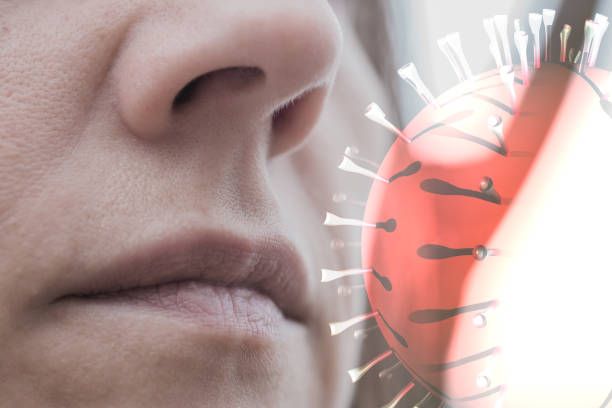Age-Dependent Cellular Responses to SARS-CoV-2 in Nasal Epithelial Cells
Comparative analysis of SARS-CoV-2 infection across pediatrics, adults, and older adults.
Nose inhaling coronavirus.
Image Credits: Unsplash

Children infected with SARS-CoV-2 rarely progress to respiratory failure, while the risk of mortality remains high in individuals over 85 years of age. This study highlights significant age-specific differences in the cellular response to SARS-CoV-2 infection.
The study revealed that cellular responses to SARS-CoV-2 infection vary significantly by age, with distinct differences observed in nasal epithelial cells from pediatric, adult, and older adult groups. In all age groups, ciliated cells were the primary sites for viral replication, but their responses differed: pediatric samples developed a unique goblet inflammatory subtype that displayed high expression of interferon-stimulated genes and incomplete viral replication, suggesting a robust immune response.
“Our in vitro model using primary NECs closely resembles SARS-CoV-2 infection in the human airway, the primary site of infection,” according to the investigators. “It confirms age-related changes in upper airway progenitor basal cell types reported previously and allows for the detection of intrinsic age-related differences in epithelial cells without confounding variations in host immunity.”
In contrast, older adult samples showed an increase in basaloid-like cells, which facilitated the spread of the virus and were linked to impaired epithelial repair mechanisms. These age-specific cellular responses were further validated by integrating data from in vivo COVID-19 studies, confirming the study's in vitro findings, and underscoring the importance of age in influencing the course of SARS-CoV-2 infection.
This study investigates the cellular landscape and function of nasal epithelial cells across 3 age groups—pediatric (<12 years), adult (30–50 years), and older adult (>70 years)—in response to ex vivo SARS-CoV-2 infection. The study measured the expression levels of ACE2 and TMPRSS2 in different nasal epithelial cell subtypes and assessed cell tropism of SARS-CoV-2. Data from in vivo COVID-19 studies were used to validate and integrate the findings from the ex vivo models.
“Through the integration of existing in vivo COVID-19 datasets, we confirmed the existence of both basaloid-like 2 and goblet inflammatory cells identified in vitro to be induced in an age-dependent response to infection,” according to the investigators. “This validates the early epithelial response to SARS-CoV-2 in our in vitro model.”
The investigators also acknowledged limitations in their study, highlighting the discrepancies between in vitro and in vivo conditions. They pointed out that basaloid-like 2 cells are much less abundant in vivo, which might result from differences in sample collection and processing. They also noted the challenge in translating the precise timing of viral and cellular dynamics from controlled lab environments to real-world clinical settings, where the timing of sample collection after infection onset can vary and is often estimated based on symptom appearance.
In summary, these findings offer insights into the age-dependent pathogenesis of COVID-19 and highlight how compromised repair processes exacerbate SARS-CoV-2 infection in older individuals.
Reference
Woodall M, Cujba A, Worlock K, et. al. Age-Specific Nasal Epithelial Responses to SARS-CoV-2 Infection. Nature Microbiology. Publihsed April 15, 2024. Accessed April 16, 2024. https://doi.org/10.1038/s41564-024-01658-1
